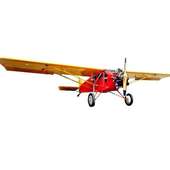- Why ‘Impoundment’ matters (11/22/24)
- Time for reform to ensure future of Social Security (11/21/24)
- A standing ovation for ‘Elf the Musical’ (11/19/24)
- AI’s influence on the 2024 election – not as damaging as feared (11/15/24)
- Tackling childhood obesity in rural Nebraska: A long-awaited solution (11/14/24)
- Polls aren’t perfect, but they help us listen—and act (11/8/24)
- Win or lose: Voters urged to maintain perspective (11/5/24)
Editorial
Bison assuming rightful place as American symbol
Thursday, April 28, 2016
The suggestion by East Coast scholars Frank and Deborah Popper that the Plains be turned back into a "Buffalo Commons" raised the hackles of Southwest Nebraska residents, to the point that an annual event was named the Buffalo Commons Storytelling Festival in defiance.
But that doesn't mean we have anything against the buffalo -- more properly the American bison, Bison bison. McCook High School's mascot, after all, is the Bison.
Regional Editor Connie Jo Discoe said it "just seemed natural" to see a small herd of bison turned into a pasture near Hugh Butler Lake. "They are where they should be."
In doing so, Darrell Meister has picked up a torch carried by Charles Jesse "Buffalo" Jones, an explorer, big-game hunter and first game warden of Yellowstone Park, who was instrumental in saving the animal from extinction. Perhaps we should call the McCook native and Honolulu resident "Bison" Meister?
Thus, it's gratifying to see that the American bison is on its way to joining the bald eagle as an official national symbol, expected to be named the official mammal of the United States through the National Bison Legacy Act, passed by the House on Wednesday and expected to clear the Senate any day.
It was a rare, bipartisan success, thanks to a coalition of conservationists, ranchers and tribal groups such as the InterTribal Buffalo Council, which said it wants to "restore bison to Indian nations in a manner that is compatible with their spiritual and cultural beliefs and practices."
Bison once roamed the entire North American continent, and began to decline in numbes when Native Americans obtained horses and rifles from Europeans.
That decline accelerated toward disaster with westward expansion, when it became official U.S. government policy to extinguish the herds as a way to subdue the Indian tribes.
"I would not seriously regret the total disappearance of the buffalo from our western plains, in its effect upon the Indians," wrote Secretary of the Interior Columbus Delano in 1873.
With the help of frontiersmen like North Platte's William F. "Buffalo Bill" Cody, they very nearly succeeded.
Only a few dozen in Yellowstone and a thousand or so privately owned animals survived, including herds owned by Buffalo Jones in Kansas and Southwest Nebraska.
William Hornaday, Theodore Roosevelt and others took up the cause, making the killing of bison a crime in 1894 and sending 15 bison from the Bronx Zoo to a reserve in Oklahoma.
Herds have since grown to include animals in every state, including some 51,000 animals managed by media mogul Ted Turner's Turner Enterprises on two million acres in Nebraska, Kansas, Montana, New Mexico, South Dakota and Argentina.
Like the bald eagle, another creature brought back from the brink of extinction, the bison is assuming its rightful place as an important symbol of the American spirit.

